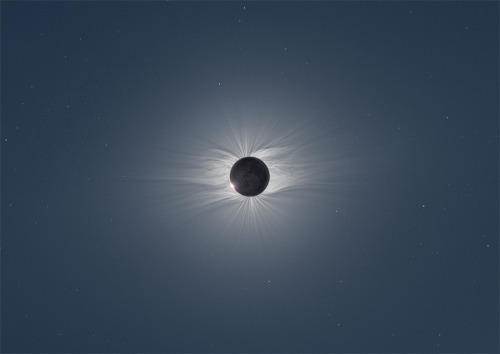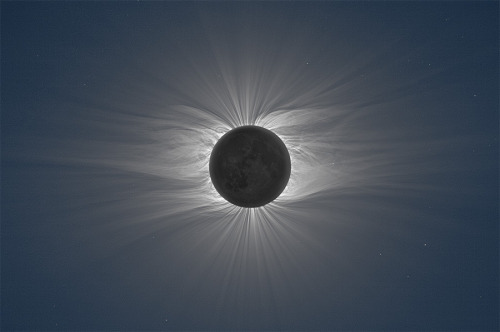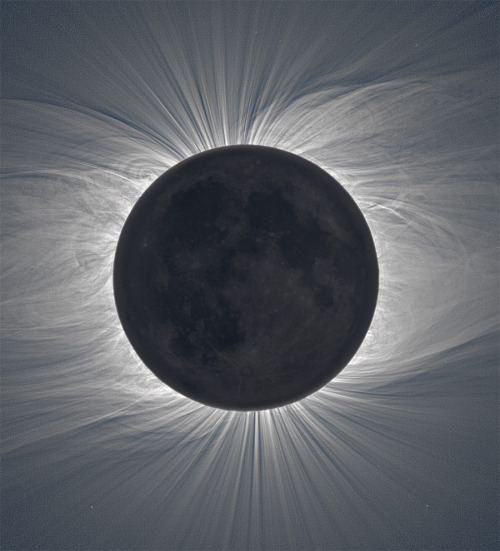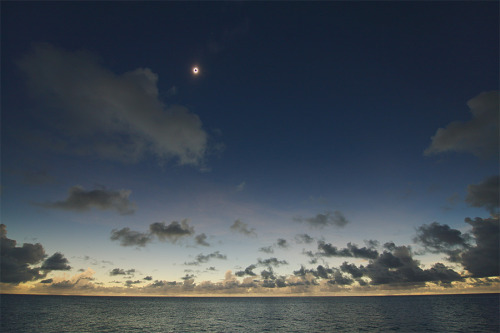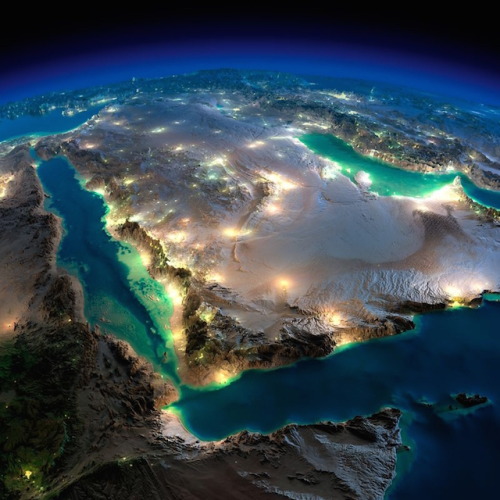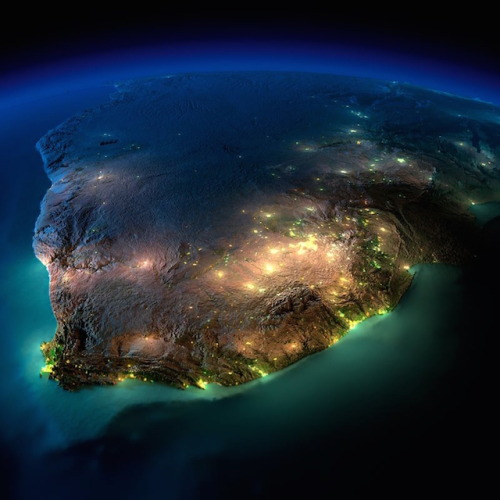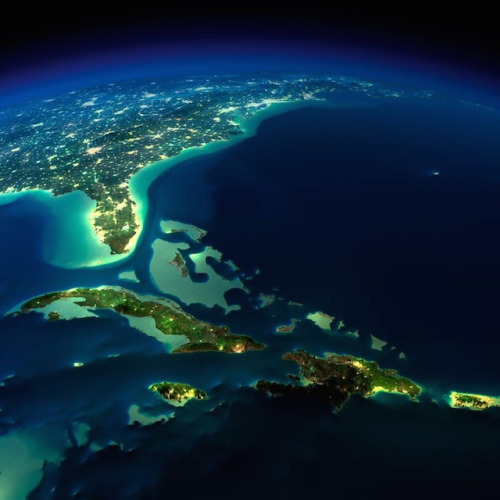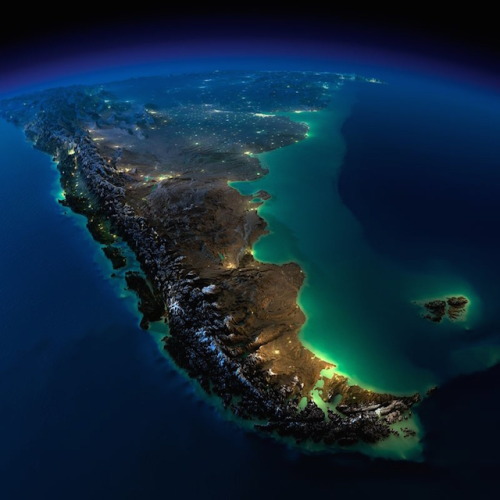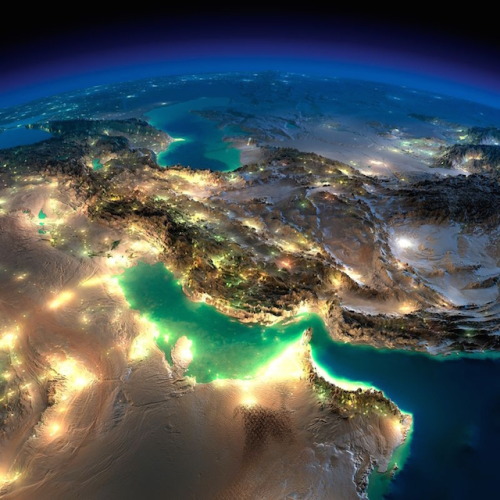Mega-tsunamis In An Ancient Ocean On Mars May Have Shaped The Landscape And Left Deposits That Hint At

Mega-tsunamis in an ancient ocean on Mars may have shaped the landscape and left deposits that hint at whether the planet was once habitable, researchers say.
The giant waves, thought to have reached up to 120 metres in height as they raced over the land, could have been triggered by two large meteorites slamming into the surface.
The tsunamis may been powerful enough to shape much of the ancient coastlines on Mars, said J. Alexis Palmero Rodriguez, of the Planetary Science Institute in Tucson, Arizona, who led the study.
Writing in the journal Scientific Reports, the international team, which included scientists from the US, China and Germany, describe how they set out to probe a Martian mystery.
It has previously been proposed that the lowlands of the northern hemisphere of Mars were catastrophically flooded around 3.4 billion years ago, forming a vast ocean, potentially covering several million square kilometres. But scientists have been puzzled by the lack of an associated shoreline and its expected features.
Now Rodriguez and his team think they may have the answer- the fact that it is hard to make out such ancient shorelines is because huge tsunamis buried them, depositing sediments up to hundreds of kilometres inland.
Continue Reading.
More Posts from Maevetheeuropan and Others







Here’s a comic on something flaming hot!
This week’s comic: Firewall Theory
http://www.sciencealert.com/try-to-escape-a-black-hole-and-you-ll-be-burnt-to-a-crisp-new-paper-cautions
https://profmattstrassler.com/articles-and-posts/relativity-space-astronomy-and-cosmology/black-holes/black-hole-information-paradox-an-introduction/




Dynamic projection mapping onto deforming non-rigid surface
Truly impressive technology from Ishikawa Watanabe Laboratory, University of Tokyo, can accurately projection map on moving, loose, dynamic surfaces:
We realize dynamic projection mapping onto deforming non-rigid surface based on two original technologies. The first technology is a high-speed projector “DynaFlash” that can project 8-bit images up to 1,000 fps with 3 ms delay. The second technology is a high-speed non-rigid surface tracking at 1,000 fps. Since the projection and sensing are operated at a speed of 1,000 fps, a human cannot perceive any misalignment between the dynamically-deforming target and the projected images. Especially, focusing on new paradigms in the field of user interface and fashion, we have demonstrated dynamic projection mapping onto a deformed sheet of paper and T-shirt. Also we show that projection to multiple targets can be controlled flexibly by using our recognition technique.
More Here
SpaceX Sends Super Science to Space Station!
SpaceX is scheduled to launch its Dragon spacecraft PACKED with super cool research and technology to the International Space Station June 1 from Kennedy Space Center in Florida. New solar panels, investigations that study neutron stars and even fruit flies are on the cargo list. Let’s take a look at what other bits of science are making their way to the orbiting laboratory 250 miles above the Earth…

New solar panels to test concept for more efficient power source
Solar panels generate power well, but they can be delicate and large when used to power a spacecraft or satellites. This technology demonstration is a solar panel concept that is lighter and stores more compactly for launch than the solar panels currently in use.

Roll-Out Solar Array (ROSA) has solar cells on a flexible blanket and a framework that rolls out like a tape measure and snap into place, and could be used to power future space vehicles.
Investigation to Study Composition of Neutron Stars
Neutron stars, the glowing cinders left behind when massive stars explode as supernovas, contain exotic states of matter that are impossible to replicate in any lab. NICER studies the makeup of these stars, and could provide new insight into their nature and super weird behavior.

Neutron stars emit X-ray radiation, enabling the NICER technology to observe and record information about its structure, dynamics and energetics.
Experiment to Study Effect of New Drug on Bone Loss
When people and animals spend lots of space, they experience bone density loss. In-flight exercise can prevent it from getting worse, but there isn’t a therapy on Earth or in space that can restore bone that is already lost.

The Systemic Therapy of NELL-1 for osteoporosis (Rodent Research-5) investigation tests a new drug that can both rebuild bone and block further bone loss, improving health for crew members.
Research to Understand Cardiovascular Changes
Exposure to reduced gravity environments can result in cardiovascular changes such as fluid shifts, changes in total blood volume, heartbeat and heart rhythm irregularities, and diminished aerobic capacity.

The Fruit Fly Lab-02 study will use the fruit fly (Drosophila melanogaster) to better understand the underlying mechanisms responsible for the adverse effects of prolonged exposure to microgravity on the heart. Fruit flies are effective model organisms, and we don’t mean on the fashion runway. Want to see how 1,000 bottles of fruit flies were prepared to go to space? Check THIS out.
Space Life-Support Investigation
Currently, the life-support systems aboard the space station require special equipment to separate liquids and gases. This technology utilizes rotating and moving parts that, if broken or otherwise compromised, could cause contamination aboard the station.

The Capillary Structures investigation studies a new method of water recycling and carbon dioxide removal using structures designed in specific shapes to manage fluid and gas mixtures.
Earth-Observation Tools
Orbiting approximately 250 miles above the Earth’s surface, the space station provides pretty amazing views of the Earth. The Multiple User System for Earth Sensing (MUSES) facility hosts Earth-viewing instruments such as high-resolution digital cameras, hyperspectral imagers, and provides precision pointing and other accommodations.

This investigation can produce data that could be used for maritime domain awareness, agricultural awareness, food security, disaster response, air quality, oil and gas exploration and fire detection.
Watch the launch live HERE! For all things space station science, follow @ISS_Research on Twitter.
Make sure to follow us on Tumblr for your regular dose of space: http://nasa.tumblr.com

Scientists invented fabric that makes electricity from motion and sunlight. To create the fabric, researchers at Georgia Tech wove together solar cell fibers with materials that generate power from movement. It could be used in “tents, curtains, or wearable garments,” meaning we’d virtually never be without power. Source
Largest Batch of Earth-size, Habitable Zone Planets
Our Spitzer Space Telescope has revealed the first known system of seven Earth-size planets around a single star. Three of these planets are firmly located in an area called the habitable zone, where liquid water is most likely to exist on a rocky planet.
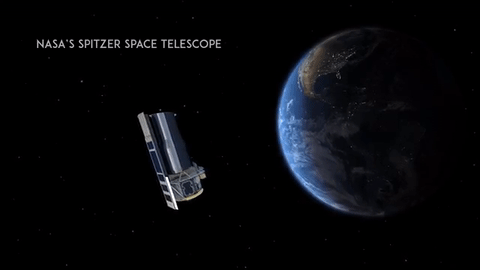
This exoplanet system is called TRAPPIST-1, named for The Transiting Planets and Planetesimals Small Telescope (TRAPPIST) in Chile. In May 2016, researchers using TRAPPIST announced they had discovered three planets in the system.

Assisted by several ground-based telescopes, Spitzer confirmed the existence of two of these planets and discovered five additional ones, increasing the number of known planets in the system to seven.
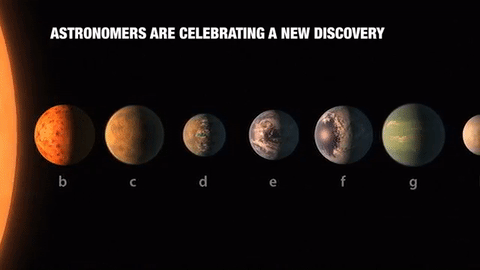
This is the FIRST time three terrestrial planets have been found in the habitable zone of a star, and this is the FIRST time we have been able to measure both the masses and the radius for habitable zone Earth-sized planets.
All of these seven planets could have liquid water, key to life as we know it, under the right atmospheric conditions, but the chances are highest with the three in the habitable zone.

At about 40 light-years (235 trillion miles) from Earth, the system of planets is relatively close to us, in the constellation Aquarius. Because they are located outside of our solar system, these planets are scientifically known as exoplanets. To clarify, exoplanets are planets outside our solar system that orbit a sun-like star.

In this animation, you can see the planets orbiting the star, with the green area representing the famous habitable zone, defined as the range of distance to the star for which an Earth-like planet is the most likely to harbor abundant liquid water on its surface. Planets e, f and g fall in the habitable zone of the star.
Using Spitzer data, the team precisely measured the sizes of the seven planets and developed first estimates of the masses of six of them. The mass of the seventh and farthest exoplanet has not yet been estimated.

For comparison…if our sun was the size of a basketball, the TRAPPIST-1 star would be the size of a golf ball.
Based on their densities, all of the TRAPPIST-1 planets are likely to be rocky. Further observations will not only help determine whether they are rich in water, but also possibly reveal whether any could have liquid water on their surfaces.
The sun at the center of this system is classified as an ultra-cool dwarf and is so cool that liquid water could survive on planets orbiting very close to it, closer than is possible on planets in our solar system. All seven of the TRAPPIST-1 planetary orbits are closer to their host star than Mercury is to our sun.

The planets also are very close to each other. How close? Well, if a person was standing on one of the planet’s surface, they could gaze up and potentially see geological features or clouds of neighboring worlds, which would sometimes appear larger than the moon in Earth’s sky.

The planets may also be tidally-locked to their star, which means the same side of the planet is always facing the star, therefore each side is either perpetual day or night. This could mean they have weather patterns totally unlike those on Earth, such as strong wind blowing from the day side to the night side, and extreme temperature changes.

Because most TRAPPIST-1 planets are likely to be rocky, and they are very close to one another, scientists view the Galilean moons of Jupiter – lo, Europa, Callisto, Ganymede – as good comparisons in our solar system. All of these moons are also tidally locked to Jupiter. The TRAPPIST-1 star is only slightly wider than Jupiter, yet much warmer.
How Did the Spitzer Space Telescope Detect this System?
Spitzer, an infrared telescope that trails Earth as it orbits the sun, was well-suited for studying TRAPPIST-1 because the star glows brightest in infrared light, whose wavelengths are longer than the eye can see. Spitzer is uniquely positioned in its orbit to observe enough crossing (aka transits) of the planets in front of the host star to reveal the complex architecture of the system.

Every time a planet passes by, or transits, a star, it blocks out some light. Spitzer measured the dips in light and based on how big the dip, you can determine the size of the planet. The timing of the transits tells you how long it takes for the planet to orbit the star.

The TRAPPIST-1 system provides one of the best opportunities in the next decade to study the atmospheres around Earth-size planets. Spitzer, Hubble and Kepler will help astronomers plan for follow-up studies using our upcoming James Webb Space Telescope, launching in 2018. With much greater sensitivity, Webb will be able to detect the chemical fingerprints of water, methane, oxygen, ozone and other components of a planet’s atmosphere.
At 40 light-years away, humans won’t be visiting this system in person anytime soon…that said…this poster can help us imagine what it would be like:

Make sure to follow us on Tumblr for your regular dose of space: http://nasa.tumblr.com
Everyone knows that, in space, no one can hear you scream. Sound is a wave that requires a medium to travel through, and if space is empty, there’s no medium to carry that sound. Except, as Mike from The Point Studios explains, empty is a relative term. Space is full of dust and gas and plasma, just not as full of that matter as we’re used to. Thus, the question of whether sound can travel through space turns into a matter of scale. If the scale–the wavelength–of a sound is much larger than the distance between molecules, then the sound can propagate. So there CAN be sound in space – it just has to have a very long wavelength and, thus, a very low frequency. Check out the video for the full story! (Video credit: The Point Studios)
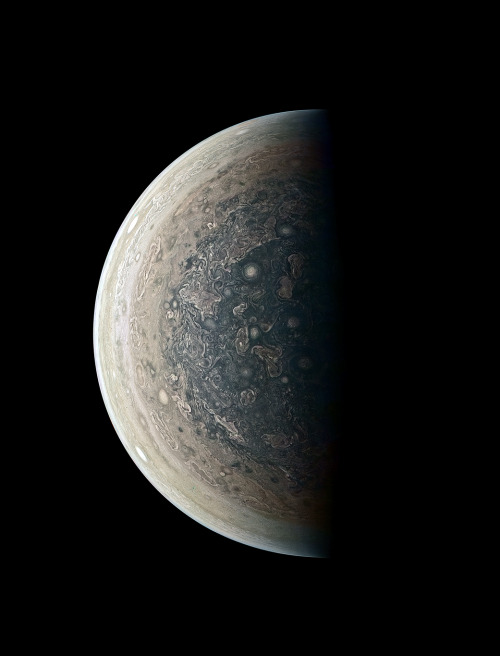
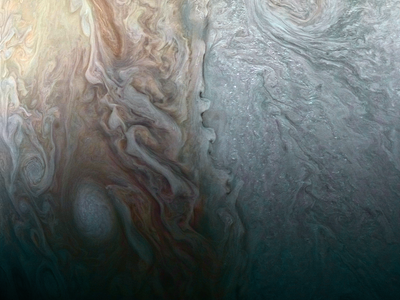



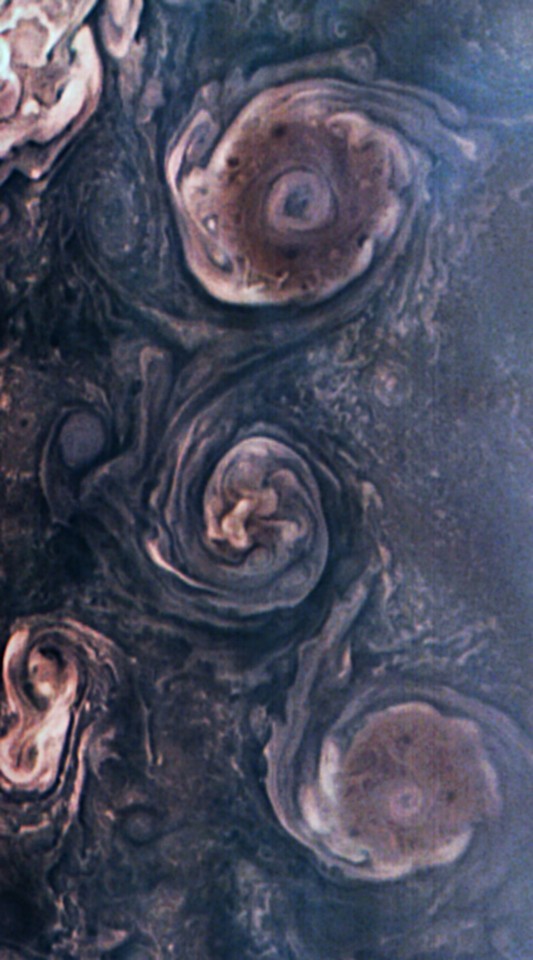



Images of Jupiter taken by JunoCam on NASA’s Juno spacecraft.

Mission Juno
Juno is a NASA spacecraft. It is exploring the planet Jupiter. Juno launched from Earth in 2011. It reached Jupiter in 2016. That was a five-year trip!
The name “Juno” comes from stories told by the Romans long ago. In the stories, Juno was the wife of Jupiter. Jupiter hid behind clouds so no one could see him causing trouble. But Juno could see through the clouds.
Juno has science tools to study Jupiter’s atmosphere. (The atmosphere is the layer of gases around a planet.) Juno will take the first pictures of Jupiter’s poles. The spacecraft will study the lights around Jupiter’s north and south poles, too.
Juno will help scientists understand how Jupiter was made. The spacecraft will help them learn how Jupiter has changed, too. The new discoveries can help us understand more about our solar system.
Sound of Jupiter’s Magnetosphere: Click here
Credit: NASA / JPL-Caltech / Mission Juno / Jason Major / Luca Fornaciari / Gerald Eichstädt


Elon Musk wants to put people on Mars in less than a decade
Musk has already said he wants SpaceX to start sending unmanned missions to Mars in 2018. He has even planned out the details of the future expeditions.
Follow @the-future-now
-
 maevetheeuropan reblogged this · 8 years ago
maevetheeuropan reblogged this · 8 years ago -
 pure-reblogs-art-tutorials reblogged this · 8 years ago
pure-reblogs-art-tutorials reblogged this · 8 years ago -
 blackcrow-king reblogged this · 8 years ago
blackcrow-king reblogged this · 8 years ago -
 maevemauvaise reblogged this · 9 years ago
maevemauvaise reblogged this · 9 years ago -
 maevemauvaise liked this · 9 years ago
maevemauvaise liked this · 9 years ago -
 i-am-of-the-stars reblogged this · 9 years ago
i-am-of-the-stars reblogged this · 9 years ago -
 hardcollegelife liked this · 9 years ago
hardcollegelife liked this · 9 years ago -
 stevensrocks reblogged this · 9 years ago
stevensrocks reblogged this · 9 years ago -
 the-tyrannothesaurus-rex liked this · 9 years ago
the-tyrannothesaurus-rex liked this · 9 years ago -
 inoksvere liked this · 9 years ago
inoksvere liked this · 9 years ago -
 peraudacia-adastra reblogged this · 9 years ago
peraudacia-adastra reblogged this · 9 years ago -
 lighthouseofalejandria-blog liked this · 9 years ago
lighthouseofalejandria-blog liked this · 9 years ago -
 superanilyadav reblogged this · 9 years ago
superanilyadav reblogged this · 9 years ago -
 superanilyadav liked this · 9 years ago
superanilyadav liked this · 9 years ago -
 vee3991 reblogged this · 9 years ago
vee3991 reblogged this · 9 years ago -
 spice-melange reblogged this · 9 years ago
spice-melange reblogged this · 9 years ago -
 spice-melange liked this · 9 years ago
spice-melange liked this · 9 years ago -
 ftcrsc-blog liked this · 9 years ago
ftcrsc-blog liked this · 9 years ago -
 citizen22 reblogged this · 9 years ago
citizen22 reblogged this · 9 years ago -
 esperaunce-blog1 liked this · 9 years ago
esperaunce-blog1 liked this · 9 years ago -
 tisitheone liked this · 9 years ago
tisitheone liked this · 9 years ago -
 hobs-birb liked this · 9 years ago
hobs-birb liked this · 9 years ago -
 gypsydanger14 liked this · 9 years ago
gypsydanger14 liked this · 9 years ago -
 heart-prisms liked this · 9 years ago
heart-prisms liked this · 9 years ago -
 carrotcupcake reblogged this · 9 years ago
carrotcupcake reblogged this · 9 years ago -
 mmmmmaggot reblogged this · 9 years ago
mmmmmaggot reblogged this · 9 years ago -
 or29l liked this · 9 years ago
or29l liked this · 9 years ago -
 kalkunyuk-blog liked this · 9 years ago
kalkunyuk-blog liked this · 9 years ago -
 allthatglittersisnothovery reblogged this · 9 years ago
allthatglittersisnothovery reblogged this · 9 years ago -
 allthatglittersisnothovery liked this · 9 years ago
allthatglittersisnothovery liked this · 9 years ago -
 galaxygamble-blog reblogged this · 9 years ago
galaxygamble-blog reblogged this · 9 years ago -
 plxnetpal liked this · 9 years ago
plxnetpal liked this · 9 years ago -
 angrydogey-blog liked this · 9 years ago
angrydogey-blog liked this · 9 years ago -
 shy-psycho liked this · 9 years ago
shy-psycho liked this · 9 years ago -
 girigoth-blog reblogged this · 9 years ago
girigoth-blog reblogged this · 9 years ago -
 cchaosagent liked this · 9 years ago
cchaosagent liked this · 9 years ago -
 themadbeagle reblogged this · 9 years ago
themadbeagle reblogged this · 9 years ago -
 plainvanillabean liked this · 9 years ago
plainvanillabean liked this · 9 years ago
